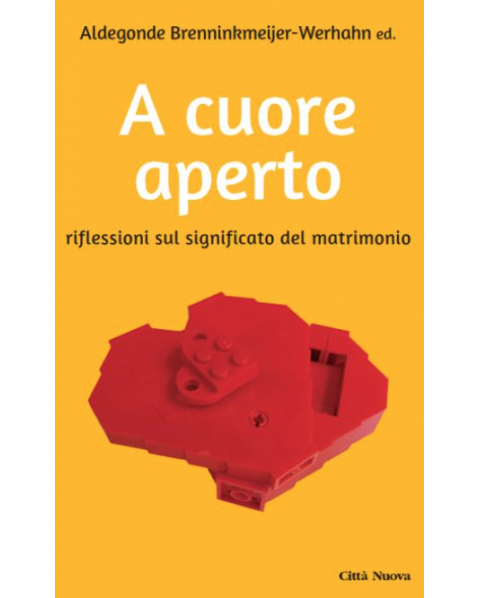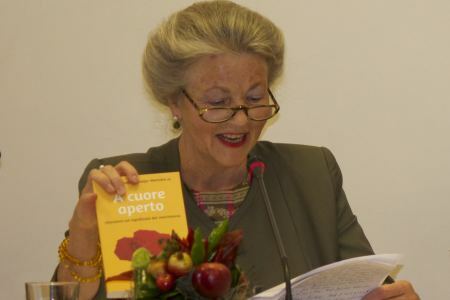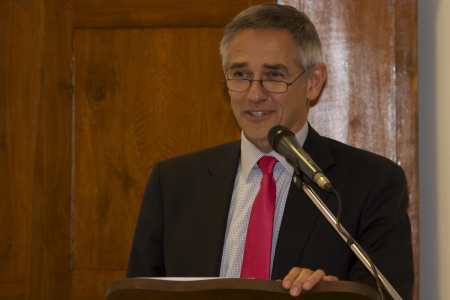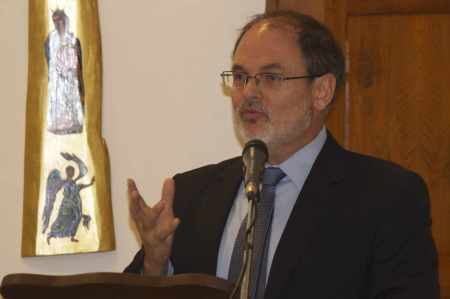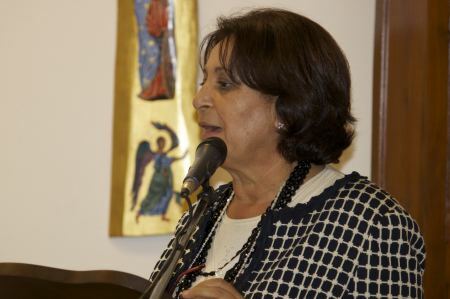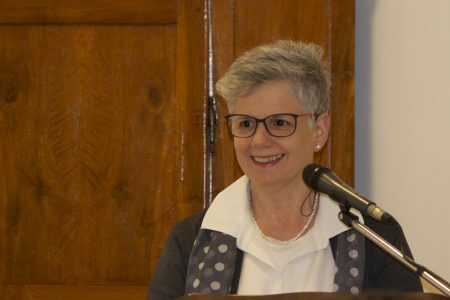Brenninkmeijer-Werhahn, Aldegonde
A cuore aperto: Riflessioni sul significato del matrimonio
Il tema del Matrimonio dalla prospettiva di vari studiosi europei e americani delle diverse discipline: psicologia, filosofia, teologia sociologia. Nel matrimonio cristiano gli sposi, accogliendosi reciprocamente, celebrano un sacramento che li impegna in un lungo cammino comune. Ogni coppia potrebbe raccontare le gioie e le difficoltà di questa “avventura”. Ma in che modo la vita matrimoniale può arrivare alla piena maturità? Com’è possibile crescere nell’amore? A quali modelli attingere? Queste pagine – nate dall’esperienza concreta dell’INTAMS (International Academy for Marital Spirituality), in cui un gruppo di di persone, religiosi e laici, esperti di diversi ambiti disciplinari, si confronta su tematiche teologiche, antropologiche e pastorali legate alla spiritualità del matrimonio – offrono a tutte le coppie sposate spunti di riflessione, in un dialogo “a cuore aperto”.
Roma: Città Nuova, 2014. - 236
ISBN 9788831125710
Order here
Launch of the book at the Lay Centre at Foyer Unitas (Rome)
23 October 2013:
New book reflects on joy, hope in marriage
More than 50 people attended the launch of the book’s Italian edition, hosted by The Lay Centre on 24 October 2013 . Four of the book’s contributors joined the editor, Aldegonde Brenninkmeijer-Werhahn, for a 90-minute discussion on marriage and family.In her words of welcome, The Lay Centre director, Donna Orsuto, said the book is of particular importance because its publication coincides with the Extraordinary Synod on the Family, which took place this year’s, and the Ordinary Synod on the Family, set for 2015. The book features 22 articles from theological and philosophical perspectives, and from personal experience. It was first published in German in 2012, and in English in 2013.
Young couples need testimonies of successful marriage, said Aldegonde Brenninkmeijer-Werhahn, the editor of A cuore aperto: riflessioni sul significato del matrimonio (2014), an insightful book regarding marriage as a lifelong commitment. She said INTAMS seeks to understand what makes marriage succeed and how successful marriages have an impact on family, as well as on social, cultural and political environments.
Contributor Thomas Knieps-Port Le Roi, INTAMS Chair for the Study of Marriage and Spirituality at the Catholic University Leuven, said the main claim of his article is that spouses accept the finite, limited love that characterizes marriage. “The imminence of sickness, aging, decline and death is normally not a hindrance for the love that binds spouses together. They are incidences that can increase commitment and love for each other,” he said. “So love can cope with illness, impairment and blows of fate and can stand up to death… that is what most couples testify to during a shared lifetime.” “Human love,” he continued, “receives its dignity precisely from the limitations. (Spouses) fight against the limitations of their capacities, to go beyond their limits, because love is supposed to be as strong as death.”
Contributor David Dawson Vásquez, a theology professor at the Catholic University of America’s Rome campus, said marriage puts love to the test. The attraction and complementarity that initially drew a man and a woman together take second place in marriage. “All of those other things fade and to love is to accept that, though not in the sense of mere acceptance,” he said. “This is what Church is,” he continued. People cannot be church unless they learn how to be with others “in their flawed state”. “In the journey of marriage you learn that … And you realize that the trajectory of marriage is really the path of salvation,” he said.
Giulia Paola Di Nicola, a professor at the University of Chieti, described the incarnated spirituality of marriage, where spouses can transmit “God’s love for the other” in concrete ways. The gift of eros is its instinct and desire to reach out to the other.
Also the editor of Prospettiva Persona, Prof. Di Nicola spoke of how one’s prayer life changes in a married relationship, where time spent in prayer often depends on the needs of one’s spouse. Married people cannot have the same prayer life as monastics, she maintained. “I can (begin to) pray but if the other needs me then I cannot. My relationship calls me to meet him, to reach out to him,” she said. “For love, I leave paradise behind for the needs of the other.” Oftentimes, couples are subjected to an unrealistic and perfectionistic view of marriage, she lamented. However, couples grow in stages and the Church needs to accept them “where they are at and accompany them… offering solidarity … and recognizing the fragility of the person.” She concluded, reflecting on the aspect of fruitfulness in marriage as too often been restricted to procreation. “But love is fruitful in thousands of ways,” she said, limited only by a couple’s creativity. She concluded that when couples trust and risk in love, they help to contribute in re-founding society on these values.
Prof. Donna Orsuto of the Pontifical Gregorian University turned to Blessed John Henry Newman for her insights on marriage as a school of love. She recounted the late cardinal’s close friendship with John Bowden, his wife and children. Newman shared what he learned from Bowden’s marriage in a homily he preached, titled “The Lesson of the Marriage Ring”. Newman said marriage moves a couple from fragmentation to integration, and the wedding ring is a powerful symbol of this communion. Marriage, he taught, is what most characterizes God’s relationship with humanity. The celibate is also called to a spousal relationship with God, which reveals the new depths of mutual surrender of married love. In the question-and-answer period, Aldegonde Brenninkmeijer-Werhahn said marriage has a beauty even if couples have been challenged or divorced. She underlined the need to assist Church leaders in understanding how they can help couples that have been hurt.
Prof. Knieps offered final comments, calling for further reflection on lay spirituality.
“We have not yet understood fully what lay spirituality is,” he said. “We have just started from a monastic model … as a sample of the highest ideal of spirituality, with the practical consequence that those … who live in relationships, bring up children, dedicate their life to a profession and participate in a life of community, that these people have in a way a kind of inferior spirituality because lack of time.”
In the same light, he said, there is a need to discover the spirituality of the home in order to understand the “domestic church” as more than just the family incorporating aspects of monastic life.
Report and photos: Laura Ieraci

